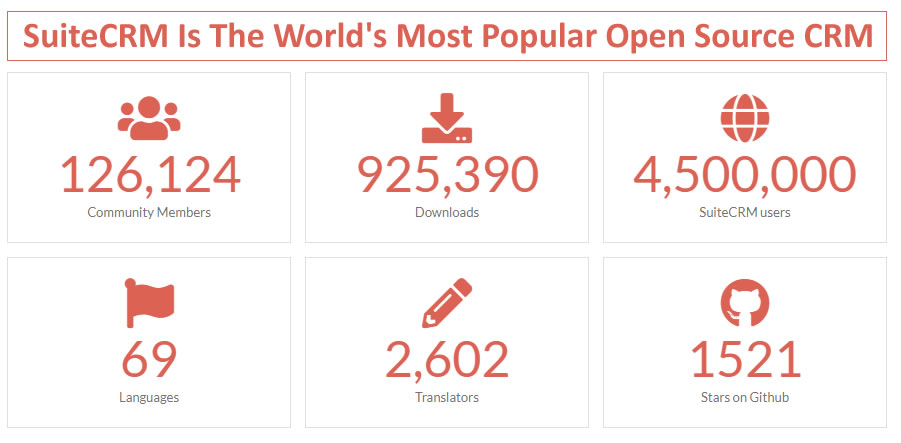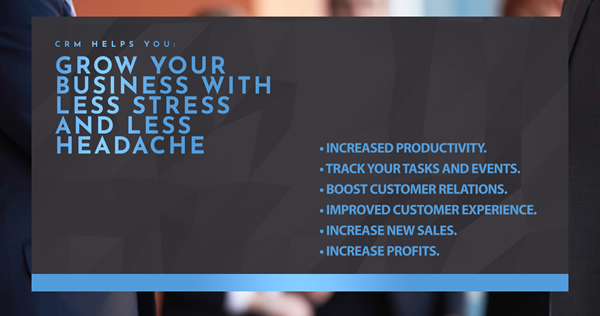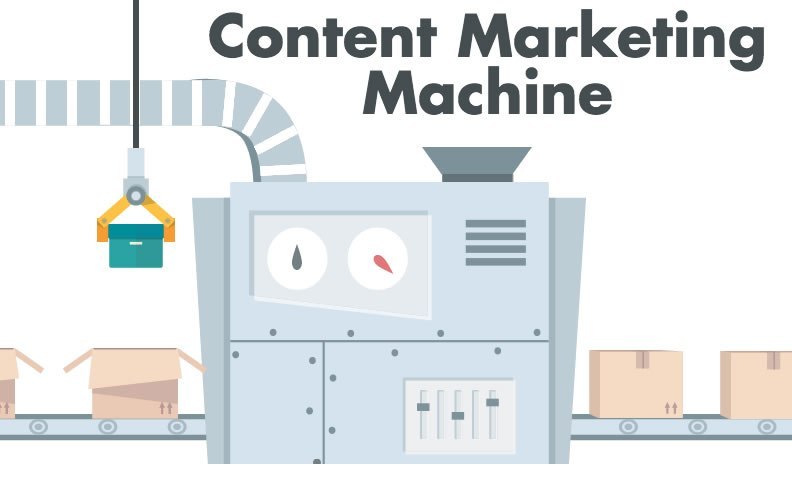Everyone in business knows that a website is a key marketing component, and most also understand that they should also have a customer relationship management system of some kind.

The fact is, businesses should have and integrate both into one seamless marketing system.
Everyone in business, regardless of how large or small their business is, should have a Customer Relationship Management system. There is no excuse.
- I have been told that staff won’t use a CRM system. They like to do things their way and a CRM interferes with their process.
- I have been told that a CRM system is too expensive or takes too long to learn.
- I have been told that they have tried CRM and it just sat there. They paid their fees but never got anything out of it.
- I have been told many things but when it comes down to it, those are just excuses because CRM is not difficult to implement and it doesn’t have to be expensive.
So what exactly is CRM?
Customer Relationship Management (CRM) software is designed to manage your organization’s relationships and interactions producing greater control, predictability and profitability.
CRM began with a focus on relationships with leads or prospects and customers with the simple goal to improve customer relationships. But CRM has evolved to encompass much more. Now, more comprehensive CRM programs support several business areas, including:
- marketing and sales management,
- inventory management,
- personnel management,
- supplier/vendor management,
- marketing and business intelligence management.
You can select which area(s) are the most suitable for your business.
Automate Communications and Processes and Increase Profit
An effective CRM system assists in staying connected to customers, automating and streamlining processes, and ultimately improving your bottom line.
SuiteCRM is at its heart a tool that handles contact management, sales management, productivity, workflows and automation of processes more efficiently and effectively than humans.

I specialize in the world’s number 1 ‘open source’ product, SuiteCRM because it is equal to or better than any branded products and it’s FREE. SuiteCRM enables you to focus on your organization’s relationships with prospects, customers, service users, colleagues, friends and family, vendors or suppliers, as well as business processes. If they’re people, SuiteCRM can manage your relationship with them.
Christine Ely – WordPress and SuiteCRM Consultant from Christine Ely on Vimeo.
There is a cycle that is at the heart every CRM system. It’s your life-cycle with people and that includes all aspects of the relationship from finding new customers, winning their trust and business, to providing support and additional services throughout the relationship. Every interaction is recorded and logged so the whole relationship from the first contact is in the system.
SuiteCRM serves everyone in the organization.
From the person at the top to the new recruit, SuiteCRM serves the sales department, marketing, customer service, opportunity management, business development, personnel, recruitment, dispatch and every other area in any business. It also serves external interactions through customer portals and ticket management.
SuiteCRM is vast but so intuitive.
It is the place where you store customer and prospect contact information, identify sales opportunities, manage and record service issues, and of course automate and manage marketing campaigns. Every successful business has a system in place and most of those systems are just manual practices. SuiteCRM puts those practices into one place and it makes available all of that information to anyone in the company that has a need for it.
SuiteCRM is the ultimate collaboration tool.
As SuiteCRM stores all interactions with your customers, and everyone in your company has access to the information they need from it, collaboration and productivity naturally increases. When a customer calls, no matter who takes that call, he or she can see how the customer has been communicated with, see their previous purchases and when they purchased, whether they have had prior support tickets, whether they paid on time and so on.
SuiteCRM helps your business drive growth.
If you want a business that will grow and last, you need a sustainable strategy; one that can handle growth. You need a system that will run the business whether you are there or not. You need a system that will take your business into the future. You need to set goals, sales targets and business objectives and of course, you need to ensure that your business makes a profit.
SuiteCRM system features reports and dashboards’
SuiteCRM offersa clear overview of how your business is doing and again, all that information is in one place. You’ll see the status of leads, orders, customer service issues, the sales pipeline, notes, outstanding tasks, status of projects and much more. You’ll be able to simultaneously monitor multiple campaigns, know where your prospect is in the funnel and what’s coming next.
SuiteCRM’s Superpower! Automated workflows.
Workflows schedule series of events to take place when certain actions are triggered. A SuiteCRM workflow can take action whenever a contact form is completed on your website. When a lead is created SuiteCRM will trigger actions. These could be to email back the potential customer thanking them for their contact and informing them that someone will be contacting them soon (as well as suggesting areas of the website to review) but then also emailing the relevant department, creating action tasks for appropriate personnel. That lead will be managed throughout the workflow from first order and every interaction in the relationship into the future.











